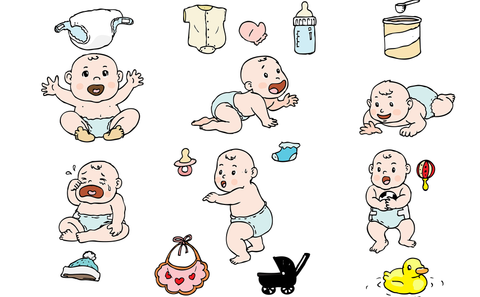
Understanding Wake Windows: A Guide for Parents
As a parent, you've likely heard the term "wake windows" tossed around in conversations about baby sleep. But what exactly are wake windows, and why are they important? In this post, we'll break down everything you need to know about wake windows, including how many your baby should have, how to manage them, and tips for optimizing them to meet your baby's unique needs.

What Are Wake Windows?
Wake windows refer to the periods your baby is awake between naps or nighttime sleep. These intervals are crucial because they directly impact how well your baby sleeps. Wake windows aren't just about keeping your baby awake; they’re about finding the right balance between activity and rest. If a wake window is too short, your baby might not be tired enough to fall asleep. If it's too long, they could become overtired, leading to fussiness and difficulty settling down.

How Many Wake Windows Should a Baby Have?
The number of wake windows your baby has depends largely on their age. Newborns typically have short wake windows, often lasting only 45 minutes to an hour. As your baby grows, these windows gradually lengthen. For example:
Newborns (0-3 months): 4-6 wake windows, each lasting 45 minutes to 1.5 hours.
Infants (3-6 months): 3-4 wake windows, each lasting 1.5 to 2 hours.
Older infants (6-9 months): 3 wake windows, each lasting 2 to 3 hours.
Toddlers (9-12 months): 2-3 wake windows, each lasting 3 to 4 hours.
It's important to note that every baby is different, and these numbers can vary. Some babies may need shorter or longer wake windows based on their temperament, sleep patterns, and overall development.
How Can You Manage Your Baby’s Wake Windows?
Managing wake windows is key to ensuring your baby gets enough sleep. Here are some tips:
Observe your baby: Pay close attention to your baby’s behavior. Look for signs of tiredness, such as rubbing their eyes, yawning, or becoming less engaged in activities. These cues can help you determine when it's time to start winding down for a nap.
Stick to a routine: Consistency is crucial when it comes to managing wake windows. Try to keep a regular schedule for naps and bedtime. This helps your baby’s body clock adjust, making it easier for them to fall asleep.
Adjust as needed: As your baby grows, their wake windows will change. Be prepared to adjust your schedule accordingly. If you notice your baby is consistently struggling to fall asleep, it may be time to tweak their wake windows.
Incorporate calming activities: As your baby’s wake window comes to an end, start incorporating calming activities like reading a book, gentle rocking, or a quiet cuddle. This helps signal to your baby that it’s time to rest.
How to Optimize Wake Windows to Your Baby’s Needs
Optimizing wake windows is all about finding the perfect balance for your baby. Here’s how you can do it:
Trial and error: Do not be afraid to experiment with different wake window lengths. It might take a few efforts to find what works best for your baby.
Consider their temperament: Some babies are naturally more alert and may need shorter wake windows, while others may be more laid-back and can handle longer periods of wakefulness.
Watch for developmental changes: As your baby hits milestones, such as starting to crawl or walk, their wake windows might change. Be flexible and ready to adjust your schedule.
Prioritize sleep quality: A well-rested baby is a happy baby. Ensure your baby can get quality sleep by optimizing their wake windows to avoid over-tiredness or under-tiredness.

Conclusion
Understanding and managing wake windows is a game-changer for your baby’s sleep routine. By paying attention to your baby’s cues, sticking to a consistent schedule, and being open to adjustments, you can help your baby get the rest they need to grow and thrive. Remember, every baby is unique, so finding the right wake window balance might take some time, but the benefits for your baby’s sleep and overall well-being are well worth the effort.





